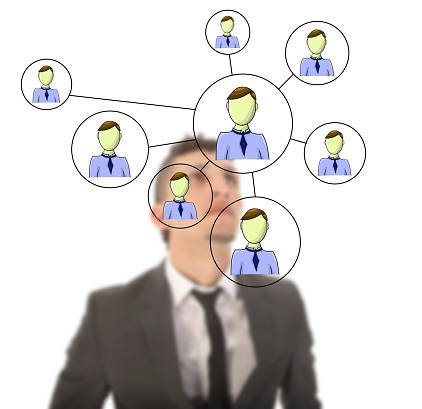Use the right tool and use the tool right

A screwdriver and a hammer are both tools. But if you use a screwdriver to try to drive a nail, chances are you will (a) not get the job done, (b) waste an awful lot of unproductive time, (c) break something, (d) hurt yourself or (e) all of the above. Further, if you do choose the right tool — the hammer to drive the nail — but grip the hammer at the head instead of at the end of the handle, you’re not going to fare much better.
That brings me to my point, which is not a lesson in carpentry. (Far be it for me to give lessons in using hand tools!) The point is about LinkedIn and the way many people use, underuse or misuse it.
As I’ve said countless times, LinkedIn is not networking; it is a networking tool. Effective networking happens — and always will happen — in person, face-to-face, pressing the flesh, rubbing elbows or however you want to define it.
But let’s get beyond that fundament. Since its founding in 2002 and launch in 2003, LinkedIn has evolved from a toy into a tool and, used smartly, it is by far the best networking tool we have. But it is still used by many people as a toy.
For serious LinkedIn users, that may sound preposterous but from my vantage point as a career coach, I can tell you otherwise. Let’s look at some numbers to support that.
At the end of the third quarter in 2016, there were 467 million LinkedIn users globally, 70 percent of them outside the U.S. So that leaves 140 million LinkedIn users here.
By the way, the growth rate, quarter over quarter, has been unbelievably consistent: between 13 and 20 million new users every quarter since Q1-2010 without fail. That amounts to two new LinkedIn users every second, if you’re counting, with the half billion mark in reach by the end of this month, if it hasn’t been reached already.
But, judging by the many job seekers with whom I interact every day, a lot of people are either trying to drive a nail with a screwdriver or holding the hammer at the wrong end.
For example, 70 percent of U.S. Internet users access Facebook weekly but only 17 percent access LinkedIn at the same frequency. In fact, of these seven prominent social media services — Facebook, Instagram, Twitter, Snapchat, Pinterest, Tumbler and LinkedIn — LinkedIn is dead last in this category, despite the fact that it was the first one to arrive on the scene.
Most astonishing (and I’m drawing from several sources here, so this is slightly fuzzy but still good enough) is the fact that social media users, who spend an average of two hours a day on all sites, spend more time on YouTube — 40 minutes — than any other site, followed by 35 minutes on Facebook. How much time does this average person spend on LinkedIn? Seventeen minutes per month.
So much for using the right tool.
Now how about using the tool right? When you understand that adding a photo to your profile makes you 36 times more likely to receive a LinkedIn message, and that LinkedIn profiles with photos get 21 times more views, why are so many people still reluctant to put up a picture?
Or, if LinkedIn users who list skills on their profiles get 13 times the views of members who don’t, why are there still so many users who don’t do it? Skills are key words, and key words are the cornerstone of searching, so you’d figure that every profile would have skills listed, right? A remarkable grasp of the obvious.
And then there’s this stupefying factoid. The most common activity of LinkedIn users when they log on is the narcissistic obsession of checking to see who’s viewed their profiles. And then doing nothing with that information.
So much for using the tool right.
Now that I’ve pontificated sufficiently, let me be clear about something else. Smart use of LinkedIn is much more of a strategic issue than it is a technical or tactical one. There are more bells and whistles on LinkedIn than any one person will ever use, as there are on all devices or cars or appliances, so don’t get too hung up on that.
Being a wizard does not make anyone a smart LinkedIn user. A combination of using LinkedIn more regularly (using the right tool) and then using it to achieve your basic networking objectives (using the tool right) does.
Career coach and corporate adviser Eli Amdur has been authoring his weekly Career Coach column since 2003, and is the author of his acclaimed career advice book, “It’s Not So Far From Here to There: The thinking person’s guide to well-managed career.” Adjunct professor of two graduate-level leadership courses at Fairleigh Dickinson University in New Jersey, he is also active on the speaker circuit, delivering presentations on today’s critical employment and leadership issues. Visit his website at www.amdurcoaching.com.












